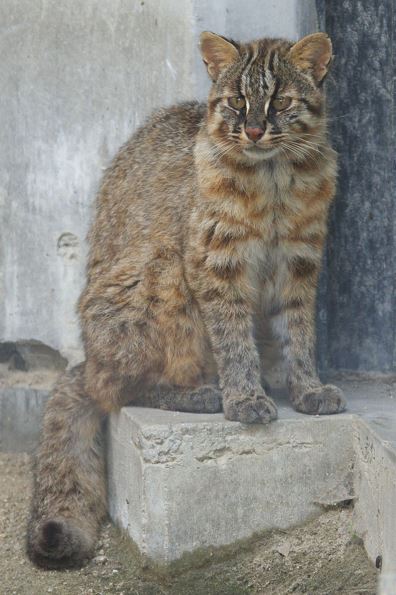Domestic cat (Felis silvestris cactus) © Bramans
Black-and-white armbands remind bullies that small cats can scratch above their weight.
No mammalian family more thoroughly exploits camouflage than the cats. Whether by stripes, rosettes, blotches, mottles, melanism, or plain countershading, cats are highly adept at blending into their surroundings. Indeed, the variations of patterning and colouration, found in the 14 genera and 38 wild species of felids, make interpreting their evolutionarily adaptive value a complex task. Broadly, most experts would assume that if any markings on cats detract somewhat from the consistent specialisation for hiding, these are shown only in social signalling within the felid species in question. The male lion’s mane is a prime example, advertising rather than hiding the animal – at the expense of its ability to stalk prey.
However, nobody seems to have considered the possibility that facets of the coats of smaller felid species might have an antithetical function, actually advertising a defensive threat to larger predators. Is it possible that some cat species – perhaps those particularly vulnerable because they live among an exceptional diversity of large carnivores – have evolved certain unmistakeable markings in response to confrontation with these aggressors? More specifically, could these smaller cats actually possess graphic displays aiding defence against larger cats?
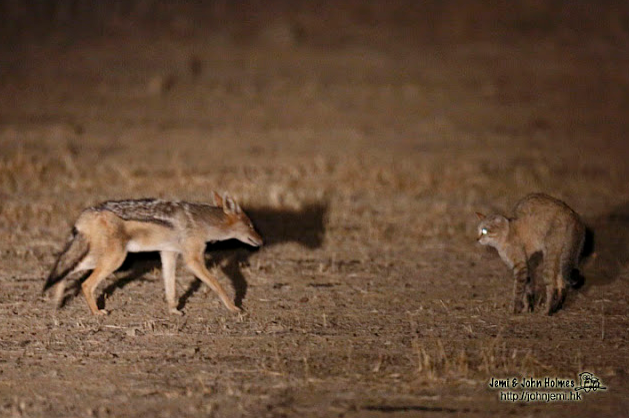
In pursuit of this idea, we’ve identified several apparent cases of warning colouration in felids. The technical term for such colouration is aposematism. If our reading of the patterns is correct, cats will turn out to be partly analogous with a contrasting family of carnivores, namely skunks and their relatives, in which colouration is seldom inconspicuous and is often so bold as to be classically aposematic.
What we’ve noticed, after scrutinising all the species of cats worldwide, is ostensible warning colouration on the forelegs of up to six species of only the relatively small cats. The particular pattern – which our photos demonstrate – is bold barring on the inner surface of the foreleg, reminiscent of the black-and-white patterning on classically aposematic animals such as porcupines, cobras and skunks. Although felids are among the most popular photographic subjects, this possibility of aposematic colouration on the foreleg of certain species has, until now, been ‘hiding in plain sight’.
If relatively small felids signal a special warning, what is their secret weapon? Here our rationale is rather nuanced. With their rapid reflexes and sharp claws, small cats can be disproportionately dangerous even for larger cats with similar weapons. The 20 claws can, for several reasons, inflict grievous injury even as the victim is overpowered. Firstly, all claws can be deployed simultaneously when the smaller cat flips on to its back in the clinch. Secondly, besides lacerating a larger opponent’s sensitive face, they can slice through a closed eyelid, blinding the attacker permanently. And thirdly, any scratch brings a risk of lethal bacterial infection. In short, small species of felids can punch above their weight, and their barred forelegs may remind other predators of that capacity.
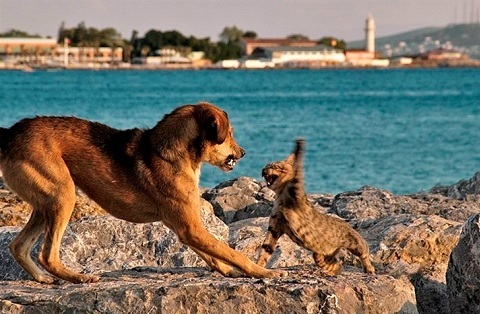
Before identifying the wild cats with ostensibly aposematic barring on the inner foreleg, let’s focus more closely on the ominous pattern itself. Two aspects seem incongruous. Firstly the bars are too dark to fit in with the rest of the coat; and secondly the background of the bars is paler than expected according to the principles of countershading. This results in an eye-catching dark-and-pale contrast on the inner foreleg of certain cats, i.e. a minor version of the signature of skunks.
Because the colouration of many cat species includes some barring on various parts of the anatomy, we’ve pondered how to distinguish aposematic barring from the expected disruptive barring that requires no explanation beyond camouflage. We’ve realised that the main clue to aposematic barring in cats is that our pattern – although restricted to minor surfaces of the body – makes the whole animal more, not less, conspicuous in the eyes of humans and presumably other predators.
Our logic goes as follows: there is a functional trade-off between overall concealment and the noticeable barring of the inner foreleg, with the aposematic facet being affordable and effective for two main reasons. Firstly the barring can be hidden: in secretive postures, by plant cover, and at night. And secondly, the inner foreleg is a particularly effective place for the bold barring given that the forefoot is the weapon of first defence. Indeed, the pattern would be directly associated with pain as the attacking predator sees the barring just before the moment of impact.
If barring on the inner surface of the foreleg of certain cats is meant to be noticeable, why have biologists not noticed its aposematic potential? One possible reason is that the incongruous barring only occurs in at most six species of cats, and is surprisingly inconsistent among subspecies, colour morphs, populations, and even individuals.
Let’s now examine each of the six species we deem to show aposematic barring.
Foremost is the African wildcat, the southern subspecies of a species ranging far into Eurasia. This cat’s body is remarkably plain, lacking even the faint spotting of the Indian subspecies. The one or two bars on its inner foreleg are accentuated by this plain colouration and are noticeable when in full view, yet are located low enough on the animal’s profile to be hidden by low plants (see Figures 1, 3, 4, 5 & 6).
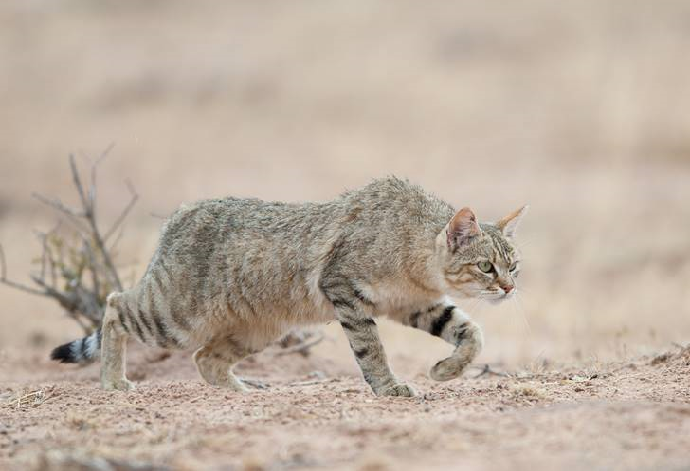
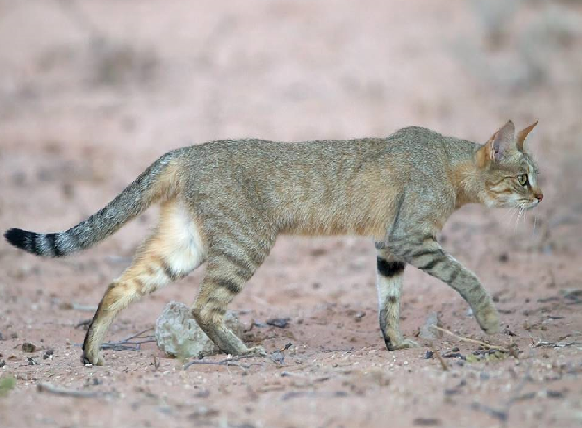
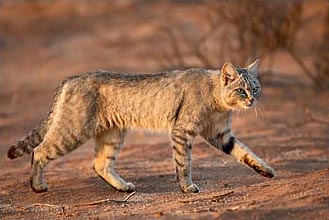
As we perused hundreds of photographs on the internet, we found puzzling inconsistency in the aposematic barring in the wildcat. The barring on the inner foreleg is for example unremarkable in most of the Eurasian and North African subspecies. By contrast, in the Kalahari – where the African wildcat has proven to be surprisingly photogenic – the barring is particularly accentuated. We suggest that this is the result of natural selection under particularly strong pressure of predation, because in this habitat the wildcat is exposed to an exceptionally diverse community of predators. What our photos (see Figures 3-6, all taken in the Kalahari) reveal is the most convincing example of aposematic barring on the felid foreleg.
Some readers may have noticed that the household descendants of the wildcat generally lack any incongruous pattern on the inner foreleg (see Figure 7). We suggest that this is partly because the domestic cat was selectively bred from Eurasian and North African subspecies in which this barring is poorly differentiated from the rest of the coat.
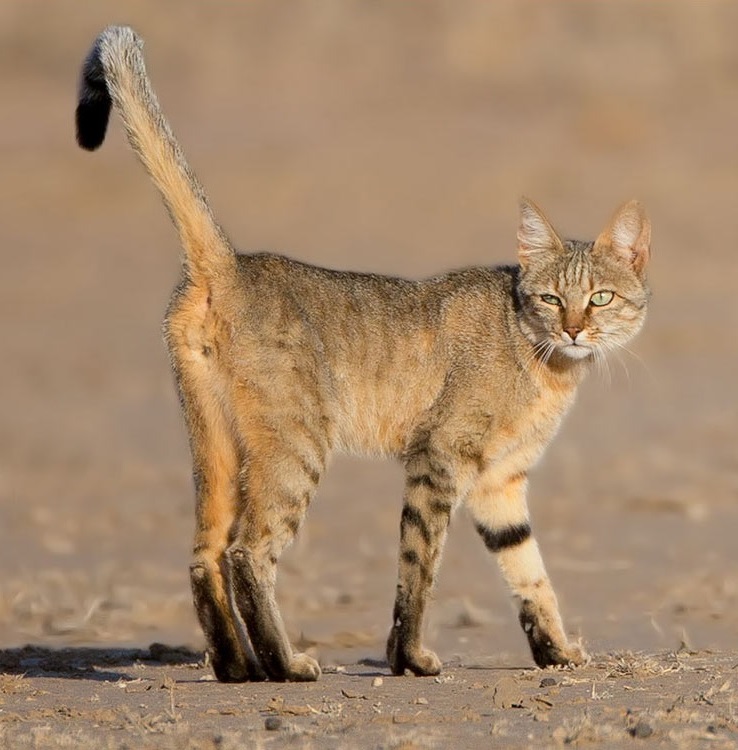
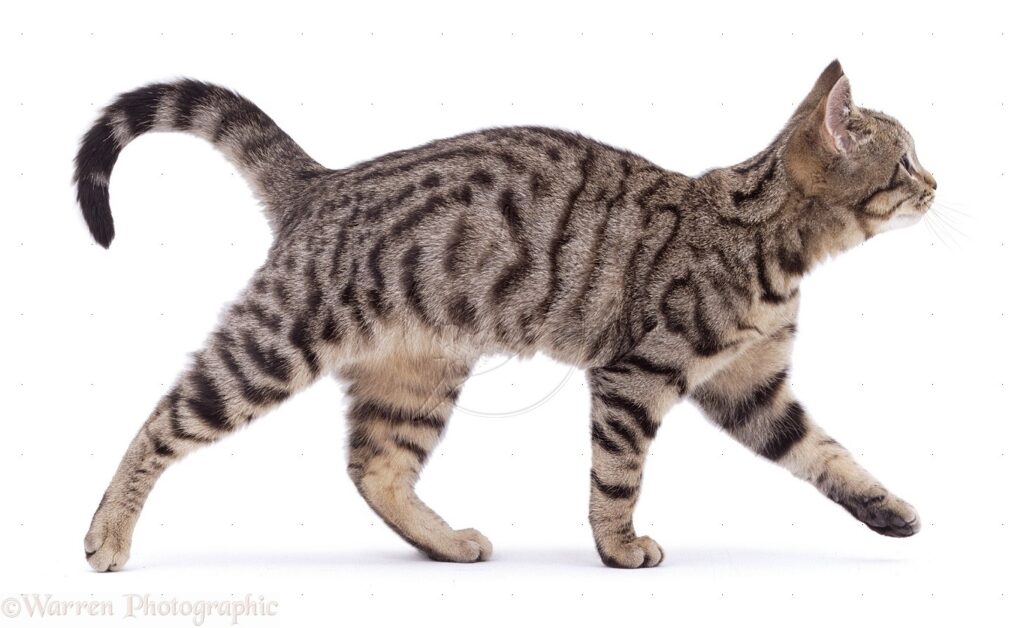
Let’s turn now to our next species: the jungle cat. This mainly southern Asian felid overlaps in distribution with the wildcat, but is considerably larger. Although the aposematic barring on the inner foreleg is individually variable, it remains noticeable because the jungle cat is even plainer than the African wildcat on the body, face, and outer surfaces of the legs.
Our third example of warning colouration is the sand cat. This arid-adapted species (Figures 10 & 11), belonging to the same genus as wildcat and jungle cat, is the smallest of the three. The community of large predators potentially threatening the sand cat is unlikely to be especially diverse in the deserts it inhabits, but its extremely small body size and open habitat make the sand cat particularly vulnerable.
A less distinct barring on the inner surface of the foreleg can be seen in at least three other species (see Figures 8-12) and remains functionally ambivalent. These cats present questionable examples of aposematic barring, because the incongruous pattern is not as clear as in the three species of Felis described above.
These additional species with a hint of aposematic barring include the serval, rusty-spotted cat and bobcat (see Figures 8-12). The first two of these, like the wildcat and jungle cat, inhabit the predator-rich subcontinents of Africa and India respectively. In the case of the serval, a poorly-documented colour morph occurs in West and Central Africa in which the pattern is accentuated because the blotches on the body are greatly subdued while the barring on the inner foreleg is retained.

For its part, the bobcat – the smallest cat in the USA and the only species in North America with forelegs that hint of warning colouration – is like the African wildcat in venturing into open semi-desert and treeless grassland, where hiding is difficult.
Aposematism is not the only possible explanation for the bold pattern we’ve spotted. The bold barring could possibly serve to accentuate a chest flag of the sort we’ve described for the lion. Indeed, the details of the barring are unique to each individual, and perhaps serve as a ‘personal signature’ for social recognition. Both of these hypothetical functions would be intraspecific, whereas by definition aposematism is interspecific. Further investigation by felid researchers is warranted.
Also worthy of study is variation in diurnal behaviour among populations and species of cats. It’s clear from the sheer number of clear photos of the wildcat in the Kalahari that this population hunts partly in broad daylight despite the sparsity of cover and the harshness of the climate. Is this a diurnal shift in activity in response to the threat from nocturnal predators including hyenas, leopard and lion? And is the aposematic barring only functional by day, when the contrasting colouration is illuminated?
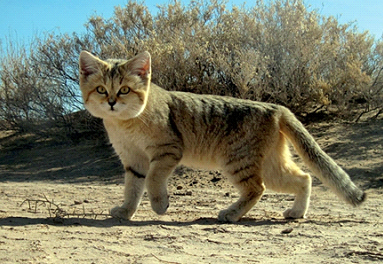
An intriguing complication in the ecological distribution of aposematism in cats is the variability within that widespread species, the wildcat. In most subspecies in Europe and Asia, the pattern is consistent with disruptive colouration in aid of camouflage. By contrast, the subspecies found in Oman and sub-Saharan Africa both have barring bold enough to stand out in photographs. And indeed, even within the subspecies called the African wildcat, the pattern is most marked in one biome: the Kalahari. Climatic similarity led us to expect the corresponding subspecies of the Sahel – on the other side of the equator – to have a similar colouration. Yet the reality is the opposite: the Saharan form of wildcat has a faded pattern on the inner foreleg. So the situation remains confused and there is still plenty of scope for discovery.

To summarise:
Readers won’t see ‘cat’ and ‘aposematic’ in the same sentence anywhere in previous writings on the adaptive colouration of felids. Indeed, the scientific literature seems silent on the topic of interspecific advertisement by means of colouration in cats. What we’ve noticed for the first time is that, in some of the smallest and plainest of felid genera, species, subspecies, and colour morphs, there’s enough incongruity in the mainly inconspicuous colouration to suggest a functional trade-off, with a conspicuous signal – on the inner surface of the foreleg – displayed posturally in defence against larger cats. If we’re right, there is no categorical distinction in colouration between felids and skunks after all. Instead, there is a common aposematic principle that has long been epitomised by the mustelids but in the case of the cats has only come into the light here at the Bio-edge.
Notice to readers: Other aspects of the same topic can be found in our bio-bullet, ‘Five newly revealed ‘conspicu-cats’’.

